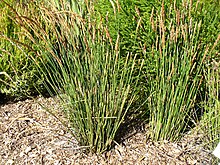
Carl Linnaeus, also known after ennoblement in 1761 as Carl von Linné, was a Swedish biologist and physician who formalised binomial nomenclature, the modern system of naming organisms. He is known as the "father of modern taxonomy". Many of his writings were in Latin; his name is rendered in Latin as Carolus Linnæus and, after his 1761 ennoblement, as Carolus a Linné.

Linnaean taxonomy can mean either of two related concepts:
- The particular form of biological classification (taxonomy) set up by Carl Linnaeus, as set forth in his Systema Naturae (1735) and subsequent works. In the taxonomy of Linnaeus there are three kingdoms, divided into classes, and they, in turn, into lower ranks in a hierarchical order.
- A term for rank-based classification of organisms, in general. That is, taxonomy in the traditional sense of the word: rank-based scientific classification. This term is especially used as opposed to cladistic systematics, which groups organisms into clades. It is attributed to Linnaeus, although he neither invented the concept of ranked classification nor gave it its present form. In fact, it does not have an exact present form, as "Linnaean taxonomy" as such does not really exist: it is a collective (abstracting) term for what actually are several separate fields, which use similar approaches.

In taxonomy, binomial nomenclature, also called binary nomenclature, is a formal system of naming species of living things by giving each a name composed of two parts, both of which use Latin grammatical forms, although they can be based on words from other languages. Such a name is called a binomial name, a binomen, binominal name, or a scientific name; more informally it is also historically called a Latin name. In the ICZN, the system is also called binominal nomenclature, "binomi'N'al" with an "N" before the "al", which is not a typographic error, meaning "two-name naming system".

Scaevola is a genus of flowering plants in the Goodenia family, Goodeniaceae. It consists of more than 130 species, with the center of diversity being Australia and Polynesia. There are around 80 species in Australia, occurring throughout the continent, in a variety of habitats. Diversity is highest in the South West, where around 40 species are endemic.
In the scientific name of organisms, basionym or basyonym means the original name on which a new name is based; the author citation of the new name should include the authors of the basionym in parentheses. The term "basionym" is used in both botany and zoology. In zoology, alternate terms such as original combination or protonym are sometimes used instead. Bacteriology uses a similar term, basonym, spelled without an i.

Pehr Osbeck was a Swedish explorer, naturalist and an apostle of Carl Linnaeus. He was born in the parish of Hålanda on Västergötland and studied at Uppsala with Carolus Linnaeus.

Caryocar is a genus of flowering plants, in the South American family Caryocaraceae described as a genus by Linnaeus in 1771. It is native primarily to South America with a few species extending into Central America and the West Indies.

Spinifex is a genus of perennial coastal plants in the grass family.
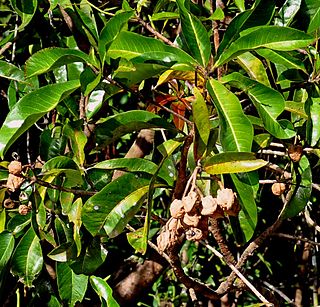
Gluta is a genus of plant in the subfamily Anacardioideae of the family Anacardiaceae. Species can be found in Madagascar, India, Indo-China, Malesia through to New Guinea.

Cymatium is a genus of small to large predatory sea snails, marine gastropod mollusks in the family Cymatiidae.
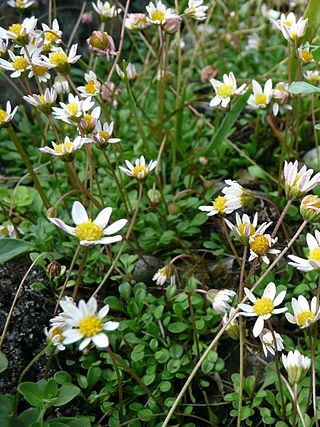
Bellium is a genus of flowering plants in the daisy family, Asteraceae, native to the Mediterranean region.

Eclipta is a genus of flowering plants in the family Asteraceae.
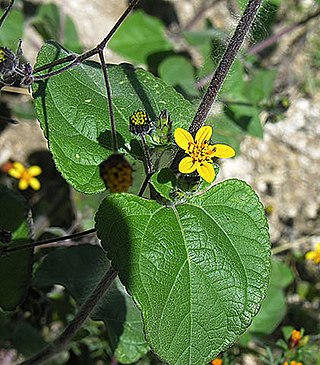
Baltimora is a genus of flowering plants in the family Asteraceae.

Pseudosphinx is a monotypic moth genus in the family Sphingidae first described by Hermann Burmeister in 1856. Its only species, Pseudosphinx tetrio, was first described by Carl Linnaeus in 1771. Its common names include tetrio sphinx, giant gray sphinx, frangipani hornworm, and plumeria caterpillar. In the island of Martinique it is best known as Rasta caterpillar because of its colors which are reminiscent of the ones found in Rastafarian clothing and accessories. It is native to the tropical and subtropical Americas from the southern and southwestern United States to Brazil. The occasional individual has been recorded as far north as the northeastern United States.

Macrocypraea is a genus of large sea snails, cowries, marine gastropod mollusks in the family Cypraeidae, the cowries.

Palmadusta is a genus of sea snails, marine gastropod mollusks in the family Cypraeidae, the cowries.

Ransoniella is a genus of sea snails, marine gastropod mollusks in the subfamily Erroneinae of the family Cypraeidae, the cowries. Most species in this genus have become a synonym of species in NotadustaSchilder, 1935

Linatella is a genus of sea snails known as predatory whelks, marine gastropod mollusks in the family Cymatiidae.
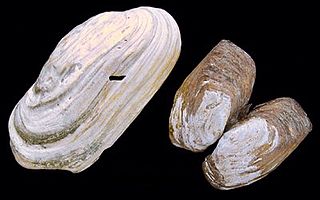
Hiatella is a genus of small saltwater clams, marine bivalve molluscs in the family Hiatellidae.

Elegia tectorum, previously Chondropetalum tectorum or Restio tectorum, more commonly Cape thatching reed, or dakriet, is a member of the restio family, Restionaceae. It is a tufted perennial growing to between 1.5 and 2.25 m, with deciduous leaf sheaths. Flowers are less than 3 mm long. Petals are smooth or hairy in the upper half. E. tectorum is found in marshes and seeps on deep sand in the Western Cape and Eastern Cape of South Africa.
